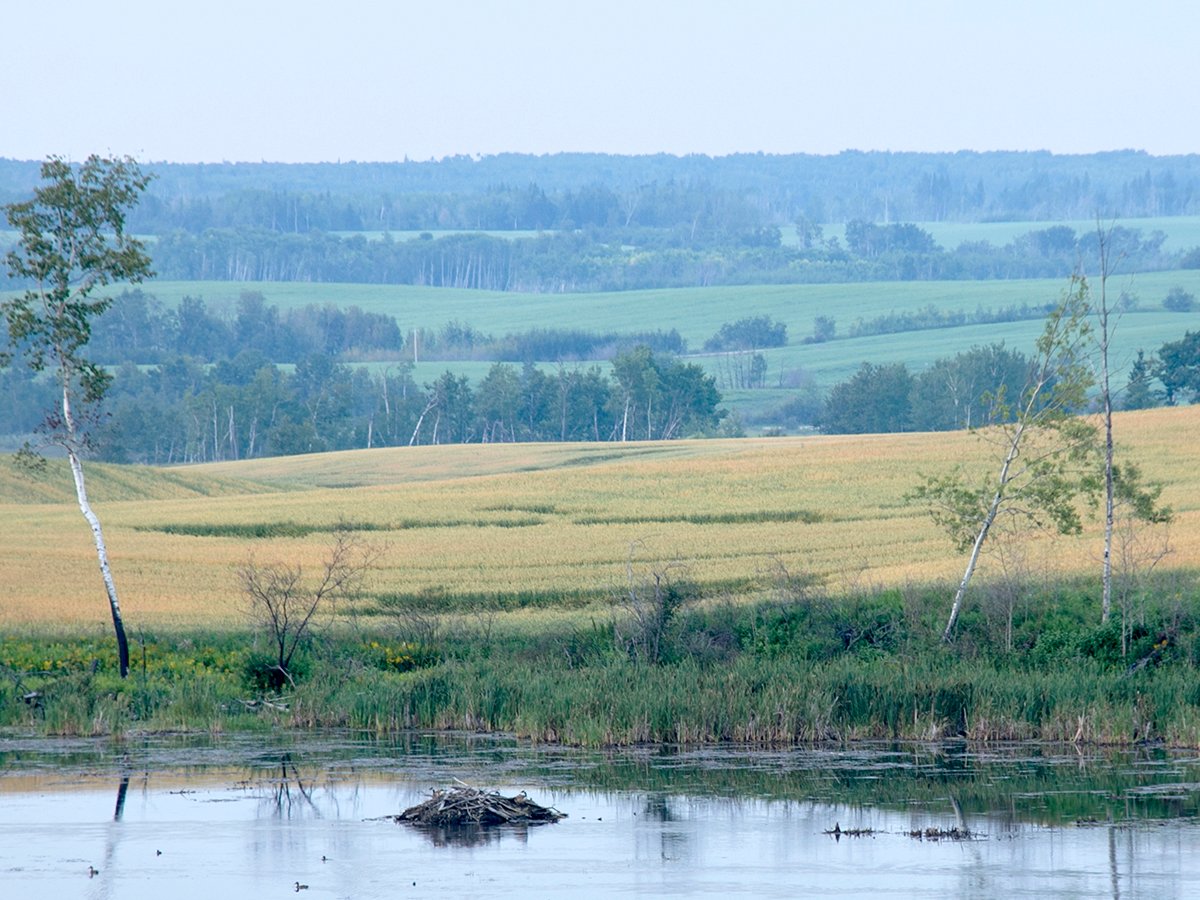MAIDSTONE, Sask. – A second dose of snow and rain in a week recently slowed the daily cattle chores at Misty Valley Farms, but no one was complaining.
“It really makes it miserable for calving, but it’s something we’ve got to have and we’re glad to have it,” said Maurice Oddan, who farms with his wife Ellen.
They also farm with Maurice’s brother, Harold, his wife, Alice, and their son, Merle, all of whom live on different home yards in the gently rolling hills north of Maidstone in western Saskatchewan.
Read Also

Intergenerational rollover rules can help succession plans
One of the most significant concerns in succession planning for farmers is the tax bill that can come with passing the farm to the next generation.
The Oddans breed more than 700 cows annually and grow feed and maintain pasture for the herd on 10,000 acres. They keep a commercial herd, but the majority are purebred Horned Herefords.
Living in an oil-rich region is a mixed blessing for the Oddans. It provides annual revenue from leases on their land and a full-time job for Merle, but the access roads and equipment cut up usable land, and the industry tightens the supply of much needed labour on the farm.
“It’s an annual source of revenue where the grains are not,” Maurice said.
Labour shortages have forced the Oddans to rethink the size of their purebred herd in recent years and consider increasing the commercial side.
“The purebreds take more time and labour,” said Maurice, who has two full-time workers in addition to part-time labour. “Without help, you cannot do winter calving.”
Calving season has now shifted to April. He said swath grazing is another way to deal with the labour shortage.
“We try to let the cows take care of themselves rather than us taking feed out to them,” he said.
The family members share the work, with Maurice handling fieldwork growing canola, wheat and field peas.
Oats and barley are produced as feed for the herd in the form of swath grazing and silage.
Maurice handles mechanical and maintenance chores, while Harold focuses on the livestock and related fencing chores.
Ellen helps with ear tags, spring calving records and record keeping while Alice runs a home-based catering business with her sister.
“We don’t all live together but there aren’t too many days we don’t talk to each other,” said Harold.
He said the give and take between family members developed from growing up and working alongside one another, beginning with their parents, Vick and Agnes.
Vick, former president of the Saskatchewan Hereford Association, started Misty Valley in the 1960s, naming it after its low lands prone to early morning fog.
He recognized his sons’ preference for livestock rather than grain and remained loyal to Herefords because they are docile, easy to maintain, make good mothers and winter well.
The next generation still believes that.
“Herefords seem to survive on less than the exotics,” Harold said.
Added Ellen: “And there’s a market for them.”
She said they truck some of their animals to Lethbridge, where there are strong markets for the breed. The farm has also hosted an annual production sale for more than 30 years.
“Dad never did follow trends,” Maurice said of the fads and trends he has seen in his years showing animals at venues such as Canadian Western Agribition and the Calgary Stampede.
Vick and Agnes raised six children, many of whom continue to farm in the region.
The family has been involved in 4-H and the local community, but Vick’s greatest loves were horses, cattle, people and food, say his sons.
The brothers have judged cattle at the Calgary Stampede and bought cattle from the famed Douglas Lake ranch in British Columbia.
“One of the best things about the Hereford business is the people you meet,” Harold said.
“You develop lots of good friendships. That, you can’t put a price on.”
Looking forward, the Oddans are optimistic that the cattle business is headed for better days.
“Grain is iffy right now, but we’ve come to a turning point in cattle,” Harold said.
They weathered consecutive drought years, BSE’s effect on the industry and a lack of markets for surplus animals in the same way they persevered through the high interest rates of the 1980s.
“I figure if we survived it, we could survive anything,” Harold said.
BSE’s silver lining was that it allowed them to buy good bulls for less money, he added.
“We’re pretty resourceful. There isn’t much we don’t do ourselves,” Maurice said.
The Oddan farm will not see many changes in the future.
Merle and his father set up a corporation to ease the farm’s transfer, while Maurice and Ellen’s son, Mark, and his wife, Tracy, have full-time jobs in Saskatoon and keep a stake in the farm by owning cattle and creating the sales catalogues.
“We’re in a position we’ve got a good bunch of cattle,” Harold said. “We’re in for some good years.”














